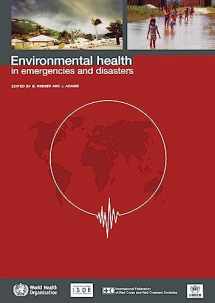
Environmental Health in Emergencies and Disasters: A Practical Guide
Book details
Summary
Description
This volume distills what is known about environmental health during an emergency or disaster. It draws on results from the International Decade for Natural Disaster Reduction, and on experience with sustainable development between the two Earth Summits, in Rio de Janeiro and Johannesburg. It is intended for practitioners, as well as for policy-makers and researchers, and thus covers both general and technical aspects of environmental health. In Part I of this volume, a conceptual framework is presented for understanding environmental health issues in the context of disaster management. The framework covers the entire disaster-management cycle, from preparedness and warning, to recovery and prevention. Guidelines are also suggested for planning and reducing the effects of extreme events on public health, and practical guidance is given in organizational and logistical matters. Throughout, the need for flexibility and innovation at the local level is emphasized, combined with solid advance planning. There is also a focus on the vulnerability of populations during an emergency or disaster, with the implication that such people have capacities and local knowledge that should be integrated into efforts to secure both environment and development against extreme events. The creative potential of balancing "top-down" and "bottom-up" approaches is emphasized in chapters on health promotion and community participation, and on human resources. Part II of this book is a detailed compendium of best practices and strategies for risk reduction and response in the fields of: · Shelter and emergency settlements; · Water supply; · Sanitation; · Food safety; · Vector and pest control; · Control of communicable diseases and prevention of epidemics; · Chemical incidents; · Radiation emergencies; · Mortuary service and handling of the dead; · Health promotion and community participation; and · Human resources. This book will be useful in planning for, responding to, and recovering from the movements of displaced persons and refugees in humanitarian crises, as well as the floods, storms, earthquakes and other extreme events that could confront health workers in the first decade of the 21st century. Given trends in the 1990s, it is unlikely that humanity has seen the last of these challenges.


We would LOVE it if you could help us and other readers by reviewing the book
Book review



